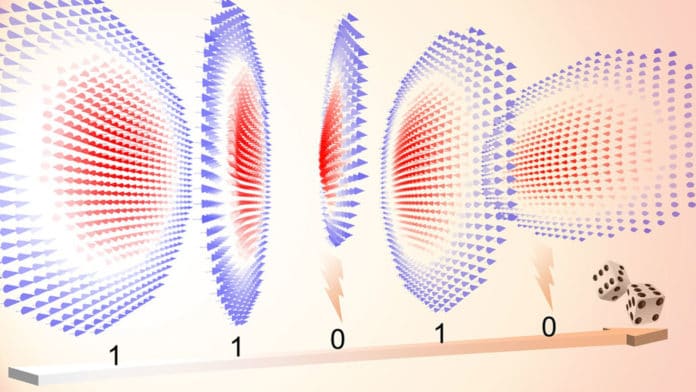Generating random numbers is quite difficult. Brown University scientists have found a new way to generate them by harnessing the behavior of skyrmions.
Skyrmions are tiny magnetic anomalies that arise in 2D materials. Now, they can generate truly random numbers useful in cryptography and probabilistic computing.
In their study, scientists also revealed previously unexplored dynamics of single skyrmions.
Gang Xiao, chair of the Department of Physics at Brown and senior author of the research, said, “There has been a lot of research into the global dynamics of skyrmions, using their movements as a basis for performing computations. But in this work, we show that purely random fluctuations in the size of skyrmions can be useful as well. In this case, we show that we can use those fluctuations to generate random numbers, potentially as many as 10 million digits per second.”
Computers use a deterministic algorithm to generate random numbers, but the numbers are not truly random. With enough information about the algorithm or its output, it could be possible for someone to find patterns in the algorithm’s numbers.
Skyrmions are generally about 1 micrometer or smaller in diameter. They behave like a kind of particle, zipping across the material from side to side. Because of their robustness, they are difficult to get rid of once they are formed.
The study shows that along with the global movement of skyrmions across a material, the local behavior of individual skyrmions can also be useful. For the study, scientists fabricated magnetic thin films using a technique that produced subtle defects in the material’s atomic lattice.
When skyrmions form in the material, these defects, which the scientists call pinning centers, hold the skyrmions firmly in place rather than allowing them to move as they usually would.
Wang said, “Each skyrmion jumps back and forth between a large diameter and a small diameter. We can measure that fluctuation, which occurs randomly, and use it to generate random numbers.”
Scientists measured the change in skyrmion size through the anomalous Hall effect, a voltage that propagates across the material. This voltage is sensitive to the perpendicular component of electron spins. Changes in skyrmion size lead to changes in voltage that can be measured easily.
Those random voltage changes can produce a string of random digits.
By optimizing the defect-spacing in their device, scientists could produce as many as 10 million random digits per second, providing a new and highly efficient method of making true random numbers.
Xiao said, “This gives us a new way of generating true random numbers, which could be useful for many applications. This work also gives us a new way of harnessing the power of skyrmions, by looking at their local dynamics as well as their global movements.”
Journal Reference:
- Wang, K., Zhang, Y. et al. Single skyrmion true random number generator using local dynamics and interaction between skyrmions. DOI: 10.1038/s41467-022-28334-4
